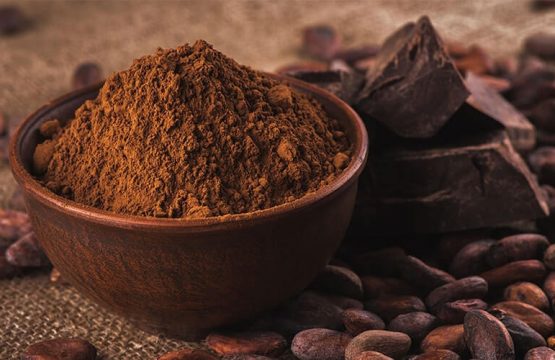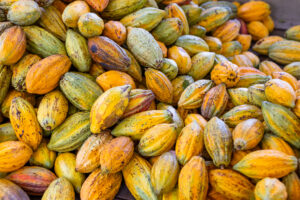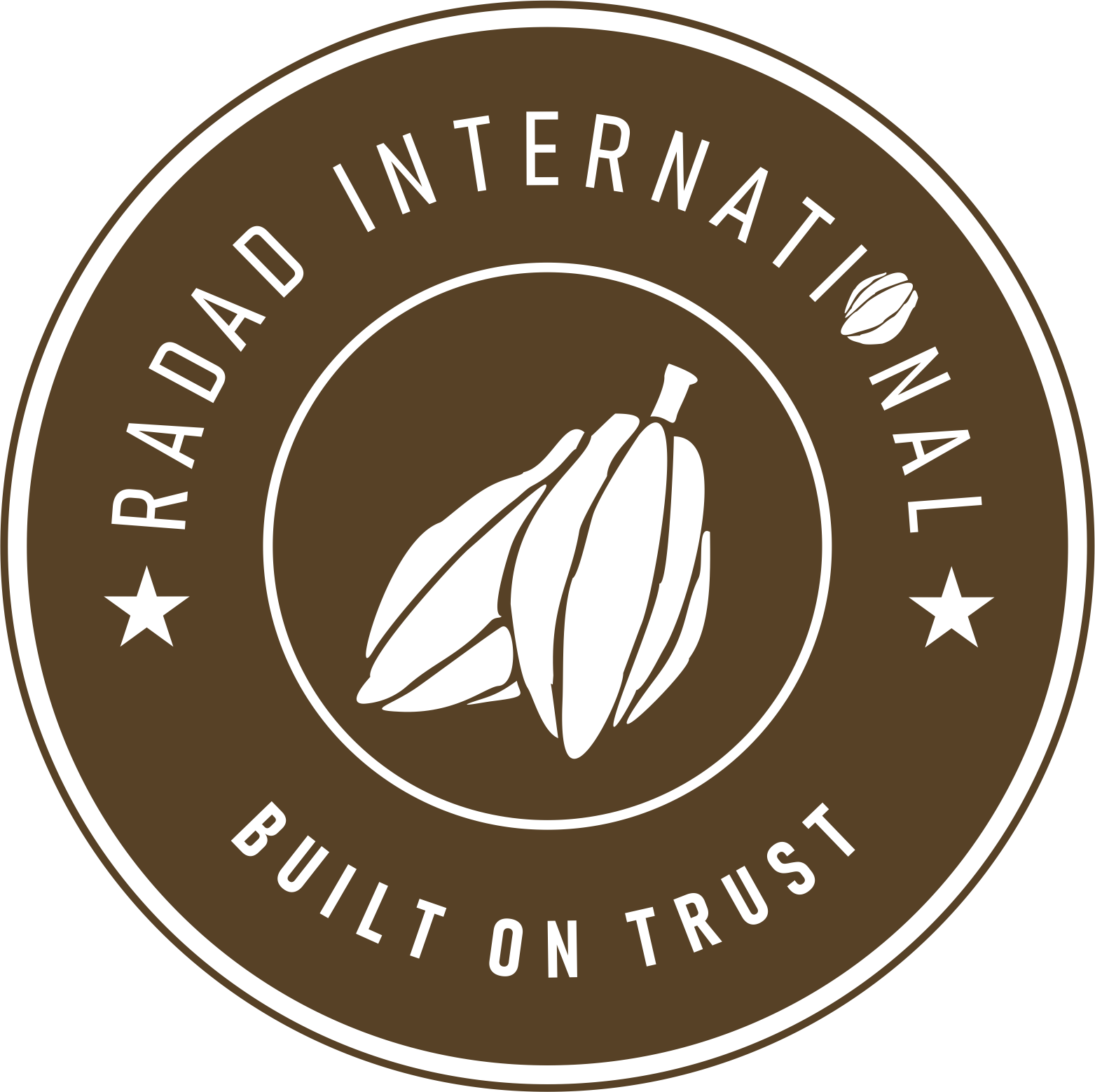Alkalized cocoa powder, also called Dutch-processed cocoa, is a type of cocoa that has undergone a treatment with an alkaline solution during processing. This step neutralizes the natural acidity present in cocoa beans, giving the powder a neutral pH, a darker appearance, and a smoother, less bitter flavor profile compared to natural (non-alkalized) cocoa.
This process was first popularized in the Netherlands, which is why it’s often referred to as “Dutch cocoa.” Today, alkalized cocoa is a staple in professional kitchens, bakeries, and chocolate manufacturing because of its consistent flavor, easy mixing properties, and deep, rich color.
Key Properties of Alkalized Cocoa Powder
-
- Neutral pH
-
- Natural cocoa has a pH of around 5, making it slightly acidic.
-
- Alkalized cocoa is treated to raise the pH closer to neutral (around 7), depending on the degree of alkalization.
-
- This change in pH reduces the sharp, acidic notes in cocoa and creates a smoother flavor profile.
-
- Because of its neutral pH, alkalized cocoa behaves differently in baking and is usually paired with baking powder instead of baking soda for leavening.
-
- Smoother Flavor
-
- The alkalizing process softens cocoa’s natural bitterness.
-
- It produces a mild, mellow chocolate taste that blends well with other ingredients.
-
- This property makes it ideal for recipes where chocolate flavor needs to be balanced and not overpowering.
-
- Darker Color
-
- One of the most distinct characteristics of alkalized cocoa is its deep brown to almost black color.
-
- The more intense the alkalization, the darker the powder.
-
- This dark pigment is prized in cakes, cookies, brownies, and chocolates for a more indulgent, rich look.
-
- Better Solubility
-
- Alkalized cocoa mixes more easily with both water and fat-based liquids compared to natural cocoa.
-
- This makes it a top choice for hot chocolate, chocolate milk, sauces, and glazes.
-
- Its ability to disperse evenly ensures a smooth texture in both baked goods and beverages.
-
- Nutritional Profile
-
- While the alkalizing process can slightly reduce flavonoid (antioxidant) content compared to raw or natural cocoa, alkalized cocoa still contains:
-
- Dietary fiber
-
- Essential minerals like magnesium, iron, copper, and manganese
-
- Plant-based compounds that contribute to overall health when used in moderation.
-
- While the alkalizing process can slightly reduce flavonoid (antioxidant) content compared to raw or natural cocoa, alkalized cocoa still contains:
-
- Unsweetened alkalized cocoa remains a low-fat, nutrient-dense ingredient.
How Alkalized Cocoa Powder is Made
-
- Harvesting and Fermentation: Cocoa beans are harvested and fermented to develop flavor.
-
- Drying and Roasting: Beans are dried and roasted to bring out chocolate’s characteristic aroma.
-
- Cracking and Grinding: The roasted beans are cracked to separate nibs from shells, then ground into cocoa liquor.
-
- Alkalization: During or after grinding, the nibs or liquor are treated with an alkaline solution (commonly potassium carbonate). This is where the acidity is neutralized, and the color and flavor are modified.
-
- Pressing: The cocoa liquor is pressed to extract cocoa butter, leaving behind cocoa solids.
-
- Grinding: These solids are ground into the fine powder we know as alkalized cocoa powder.
Grades of Alkalized Cocoa Powder
Depending on the level of alkalization, cocoa powders can vary in color and flavor intensity:
-
Light Alkalized: Mild flavor, medium brown color. Good for general baking and beverages.
-
Medium Alkalized: Richer chocolate taste, darker brown color. Often used in brownies, cakes, and desserts.
-
Dark Alkalized (Black Cocoa): Almost black color, very mellow flavor. Popular in Oreo-style cookies and premium baked goods.
Alkalized Cocoa vs Natural Cocoa: What’s the Difference?
-
Acidity: Natural cocoa is acidic, while alkalized cocoa has a neutral pH.
-
Flavor: Alkalized cocoa is smoother and less bitter, making it ideal for recipes where a rich chocolate taste is needed.
-
Color: Alkalized cocoa is darker, giving baked goods and drinks a deeper, chocolatey look.
-
Usage: Natural cocoa reacts with baking soda (because of its acidity), while alkalized cocoa is often paired with baking powder in recipes.
Why Choose Alkalized Cocoa Powder?
-
Balanced Flavor: Its smooth, less acidic taste works well in recipes where natural cocoa’s sharpness would overpower other flavors.
-
Professional Results: Consistent flavor and color make it a standard in commercial baking and chocolate production.
-
Visual Appeal: The deep color enhances the appearance of cakes, brownies, and drinks.
-
Versatility: Works well in dry mixes, frostings, beverages, and confectionery.
Applications of Alkalized Cocoa Powder
-
Baking
-
Cakes, brownies, and cookies that require a deep chocolate flavor and dark color.
-
Works best in recipes that use baking powder instead of baking soda due to its neutral pH.
-
Beverages
-
Hot chocolate, mochas, and chocolate milk mixes benefit from its smooth taste and excellent solubility.
-
Confectionery
-
Used in professional chocolate production for a consistent, mild chocolate profile.
-
Ideal for coatings and fillings.
-
Desserts
-
Perfect for puddings, mousses, ice creams, and frostings where a velvety chocolate flavor is needed without too much bitterness.
PS: If you want a consistent chocolate flavor without too much bitterness, alkalized cocoa is often the go-to choice.
Storage and Shelf Life
-
Store in an airtight container, away from light and moisture.
-
Kept properly, alkalized cocoa powder can last up to two years without losing flavor or color.
-
Avoid exposure to strong odors as cocoa can absorb them easily.
Alkalized cocoa powder is prized for its smooth flavor, dark color, and easy solubility, making it a favorite for both home bakers and professional chocolatiers. The neutral pH and mild taste give it an edge in recipes where balance is key.
Whether you’re creating rich chocolate desserts, crafting hot drinks, or producing premium chocolates, alkalized cocoa powder offers the perfect blend of flavor and functionality. Its unique properties make it a must-have ingredient for anyone serious about achieving that deep, indulgent chocolate experience.
FAQS
Is Alkalized Cocoa Powder Healthy?
One common question is whether the alkalizing process reduces the nutrients in cocoa. While it can slightly lower the natural antioxidants compared to raw or natural cocoa powder, alkalized cocoa still contains many beneficial compounds like flavonoids and minerals. When used in moderation, it can be part of a balanced diet, especially in unsweetened form.
Where to Buy Alkalized Cocoa Powder?
You can find alkalized cocoa powder in most supermarkets, specialty baking shops, and online. For large-scale use, many suppliers like Radad International offer bulk alkalized cocoa powder for bakeries, cafes, and chocolate manufacturers. When buying, look for:
-
100% cocoa with no added sugar for baking.
-
Food-grade, high-fat cocoa powder if you want richer flavor and texture.
-
Reliable suppliers if you’re purchasing in bulk for commercial use.
Tips for Using Alkalized Cocoa Powder
Check your recipe: If it calls for baking soda, you may need natural cocoa; if it calls for baking powder, alkalized cocoa is usually the right match.
Blend for rich flavor: Use alkalized cocoa in frostings or drinks for a deeper chocolate color and smoother taste.
Store it well: Keep cocoa powder in an airtight container away from light and moisture to preserve its flavor.







